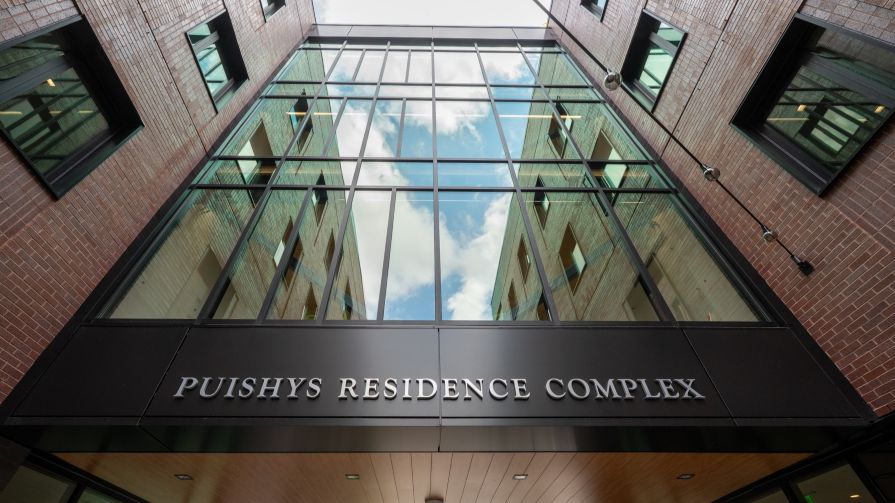Bryant University's newest apartment-style residence hall, the Puishys Residence Complex, not only offers expanded living options for upper-class students; It also sets a new standard for sustainable campus development.
Backed by a $10 million investment from Joe '80 and Kathi (Jurewicz) '81 Puishys, the five-story, 85,000-square-foot complex, consisting of two wings connected by three-level glass bridges, offers modern living in the heart of Bryant's campus. A fireplace lounge, game room, spa room, outdoor terraces, stunning treetop views from every bedroom, and 24-hour workspaces create an environment that offers both privacy and social engagement.
But what lies beneath and above makes this building a milestone in environmentally conscious construction.
RELATED ARTICLE: The Puishys Residence Complex: A “House in the Woods” and Much More
“We are particularly excited about the use of cross-laminated timber, or CLT,” says Thomas Mann, assistant vice president of the Office of Planning, Design, and Construction at Bryant.
“CLT acts as both a structure and a surface. It is durable, beautiful and, most importantly, it helps sequester carbon for the life of the building, which may be 100 years or more.”
The complex includes highly efficient mechanical equipment such as a dedicated outside air system for optimal ventilation, sophisticated controls and monitoring. “This is the first building on campus to have public energy consumption displays to increase student awareness of energy consumption,” Mann says.
An underground stormwater retention system, pedestrian access, outdoor meeting spaces and new electric vehicle charging stations complete the site's sustainable features.
In selecting a site that was close to existing utilities and within primary walking sheds, Bryant also prioritized site protection. By building vertically on a compact 1.3-acre footprint, the university was able to significantly reduce land disturbance while increasing capacity in the most compact residential development on campus and protecting land and surrounding wetlands.
“It is two and a half times more space efficient,” states Mann. “And it’s within walking distance of anywhere students need to be.”
